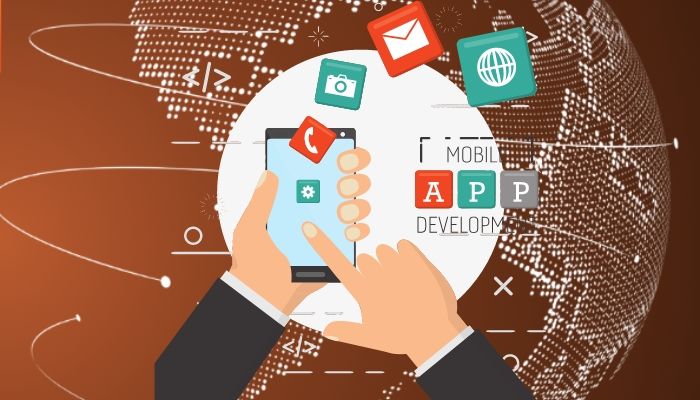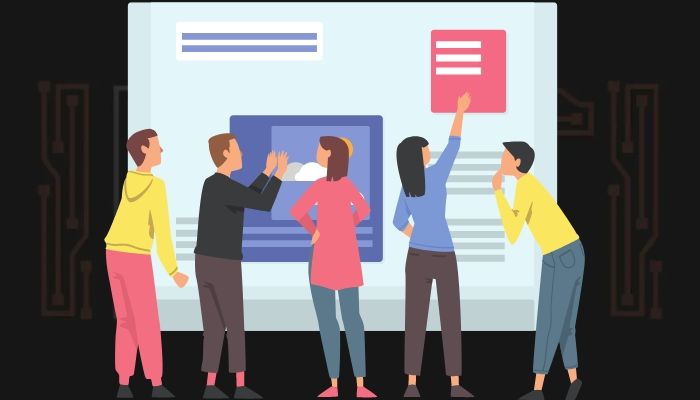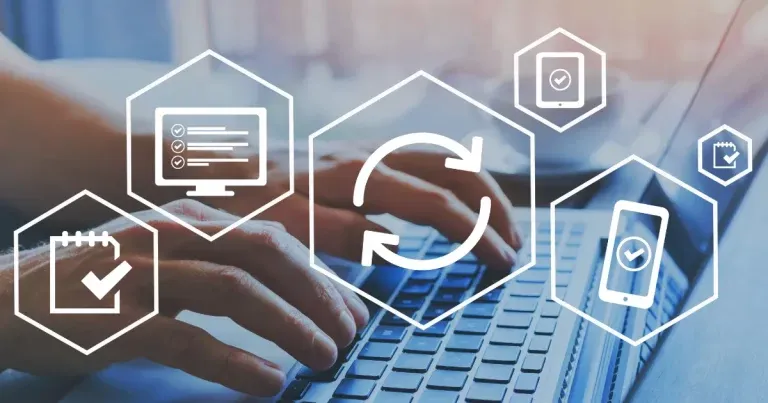10 Steps on How To Develop a Mobile App at 2023
 Marketing IBTI#Marketing IBTI
Marketing IBTI#Marketing IBTIDo you have a great idea for a mobile app? If so, you’re not alone.
Millions of people have great ideas for mobile apps, but how to develop mobile apps where only a fraction of them actually gets made?
The truth is, developing a mobile app is a lot of work. It requires a lot of planning, design, coding, and testing.
But it’s also incredibly rewarding. Do you know that 90% of small businesses that have a mobile app say it has improved their customer service.?
If you’re ready to take the plunge and develop your own mobile app, IBTI IT Solutions can help.
We have a team of experienced mobile app developers who can help you every step of the way.
Today, we’ll walk you through the steps of how to develop a mobile app. We’ll cover everything from coming up with your idea to submitting your app to the app store.
So whether you’re a complete beginner or you have some experience with mobile app development, this one is for you.
How To Develop A Mobile App: Steps
Many people are intimidated by the thought of how hard is mobile app development. The good news is that –it’s not as difficult as you might think.
With the right planning and execution, you can develop a great mobile app. Let’s have a look-
Step 1: Define Your Goals

So if you already have an idea of your mobile app, the first thing you need to do is – set clear and measurable goals.
What do you want to achieve with your app? How will it solve a problem for your users?
Your goals will guide your development process and help you stay on track. Don’t be afraid to dream big, but make sure your goals are realistic and measurable.
Once you know your goals, you can start planning your development process and make sure you’re using your time and resources effectively.
Step 2: Conduct Market Research

Next, do your market research before you start developing your app. Even if you build the best app in the world, it will not matter if there’s no market for it.
It’s easy to get excited about a new app idea, but it’s important to take the time to validate it before you start building.
Otherwise, you could waste a lot of time, money, and resources on an app that no one wants.
Step 3: Create a Wireframe

A wireframe is a rough sketch of your mobile app’s layout. It doesn’t need to be fancy or polished, and you don’t even need to worry about the app design yet.
The purpose of the wireframe is to help you visualize how your app will work and to identify any potential problems.
You can create a wireframe on a piece of paper, a whiteboard, or even a napkin. There are also a number of online wireframing tools that you can use.
Once you have a wireframe, you can start to refine the design of your app and make sure that it’s user-friendly.
Step 4: Choose Your Development Method
As there are many different ways to build a mobile app, the best method for you will depend on your budget, technical skill level, app type, and time to market.
Now you need to decide which one should you choose.
Do it yourself: If you have the technical skills and time, you can build your own app using a programming language like Java or Swift.
This is the most affordable option, but it can be time-consuming and challenging.
No-code app builders: It’s a great option for people with limited technical skills and a small budget.
These builders allow you to create an app without writing any code.
Hire a development team: If you need a highly customized app, you can hire a development team to build your app for you.
This can be an expensive option, but it’s also the best option for people who need an app that is highly customized and needs to be developed quickly.
No matter which method you choose, it’s important to do your research and find a development team that has the experience and expertise to build the app you need.
Step 6: Begin Coding

Now it’s time for developers to start building the mobile app by writing code using the chosen programming language, techniques, and methodologies.
Step 7: Create an MVP
An MVP is a version of your app that has just enough features to be usable by early users. It doesn’t have to be pretty, and it doesn’t have to have all the bells and whistles.
Its sole purpose is to get your app into the hands of users so that you can start getting feedback.
Once you have an MVP, you can start to iterate on it and add new features based on the feedback you receive.
This is a much more efficient way to develop an app because it allows you to focus on building the features that users actually want.
Step 8: Quality Assurance
Quality assurance is an important part of the mobile app development process. It involves testing the apps for bugs and errors and making sure that the app meets the user’s requirements.
QA is often overlooked, especially when projects are on a tight budget. However, it is important to remember that a bug-free app is more likely to be successful.
Step 9: Launch in the app store
Now you’re ready to launch your app to the app store where users can download and install it.
There are two main app stores – Google Play Store and Apple App Store. Each store has its own set of requirements that your app must meet to be approved.
Step 10: Maintenance
Once you have launched your app, now you have to ensure all needs or requirements continue to be met and the system continues running as specified in the first phase.
How Much Does It Cost To Develop A Mobile App?
The cost of developing a mobile app actually varies on a number of factors, including the complexity of the app, the platform it will be developed for, the experience and expertise of the developers, and the cost of marketing and distributing the app.
In general, a medium-complexity app with basic features and functionality can cost around $10,000 to $150,000 to develop.
At IBTI, we understand the complexity and the risk of developing end-to-end software.
That’s why instead of a closed-price waterfall pattern for software development, we use agile methodologies based on SCRUM that allows us to present partial results to our clients every 2-3 weeks, which helps us monitor the project closely and detect any changes that need to be made early on.
Conclusion
Developing a mobile app can be a great way to reach a wider audience and grow your business.
But, it is important to do your research and plan carefully to know how to develop mobile apps thoroughly before you get started.
Need help on how to develop mobile app for your small business? Feel free to contact us.
FAQ
How long does it take to develop a mobile app?
The development timeline for a mobile app can vary based on factors like complexity, features, and platform.
Typically, it takes several weeks to several months to develop a fully functional app.
What are the key steps involved in developing a mobile app?
The key steps in mobile app development include ideation, planning, design, development, testing, and deployment.
Each step involves various activities like wireframing, coding, UI/UX design, and quality assurance.
Which programming languages are commonly used for mobile app development?
Popular programming languages for mobile app development include Java, Kotlin (for Android), Swift, and Objective-C (for iOS).
Additionally, frameworks like React Native and Flutter offer cross-platform development options.
Do I need to have coding experience to develop a mobile app?
While coding experience can be beneficial, it is not always necessary to develop a mobile app.
Many app development tools and frameworks provide visual interfaces and drag-and-drop functionality, allowing non-coders to create apps with ease. However, having coding knowledge can offer more flexibility and customization options.

Marketing IBTI
#Marketing IBTI🇧🇷 Português
A IBTI é uma empresa de tecnologia com mais de 12 anos de experiência em desenvolvimento de sistemas, apps e soluções sob demanda. Atuamos no Brasil e no exterior com foco em qualidade, inovação e eficiência.
🇺🇸 English
IBTI is a tech company with over 12 years of experience developing custom software, apps, and IT-as-a-service solutions. We serve clients in Brazil and abroad, with a strong focus on quality, innovation, and efficiency.